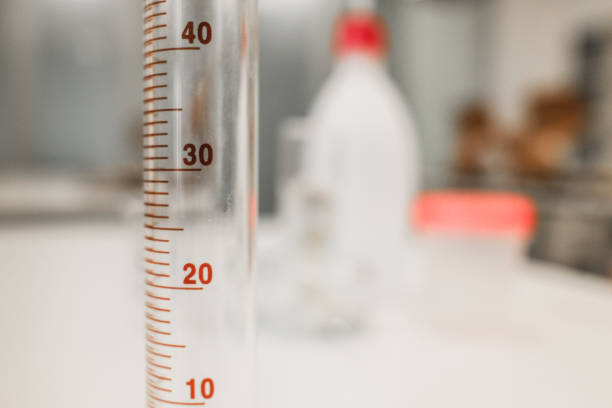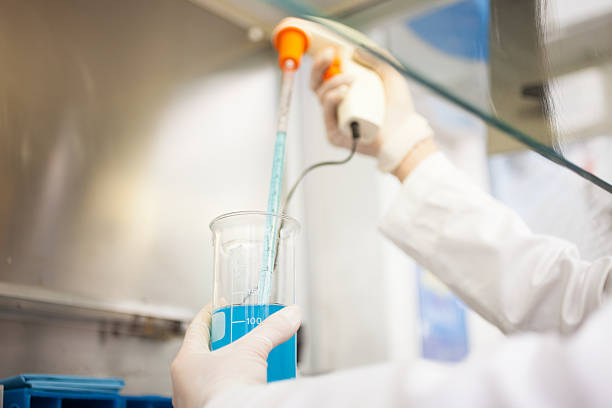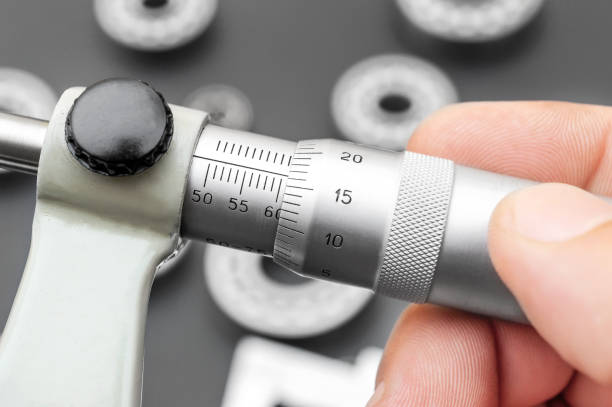In science, engineering, and data analysis, precision and accuracy are far more than just technical jargon, they form the foundation of trustworthy and meaningful results. Grasping the true definitions of these concepts, recognizing their distinctions, and applying them correctly can significantly boost the reliability of experimental outcomes and data interpretation. This detailed guide delves into the meanings of precision and accuracy, highlights their differences, explores ways to enhance them, and explains their critical importance.
What is Accuracy? A Deep Dive into Correctness
Accuracy describes how close a measured value is to the true or accepted value. It indicates the level of correctness and signifies the lack of systematic errors.
For example, if a thermometer reads 99.8°C when the actual temperature is 100.0°C, it is accurate, though slightly off. The key point is how close it is to the true value.
Key Characteristics of Accuracy
- Indicates systematic error.
- Reflects the correctness of measurement.
- Affected by instrument calibration and methodology.
- It can be improved through comparison with standards.
What is Precision? Measuring Consistency
Precision measures how close repeated measurements are to each other, regardless of whether they are correct. If a set of results is all similar but far from the actual value, it is precise but not accurate.
Imagine shooting arrows at a target. If they all hit the same spot but off the bullseye, your shots are precise but not accurate.
Key Characteristics of Precision

- Reflects random error.
- Indicates repeatability or consistency.
- Independent of the actual true value.
- Enhanced by controlled conditions and proper techniques.
What is the Difference Between Accuracy and Precision?
While often used interchangeably in casual conversation, in scientific and technical contexts, accuracy and precision mean very different things.
| Feature | Accuracy | Precision |
|---|---|---|
| Definition | Closeness to the true value | Closeness of repeated results |
| Error Type | Systematic error | Random error |
| Measurement Aim | Correctness | Consistency |
| Tools Needed | Calibrated standards | Repeated trials |
A measurement can be:
- Accurate but not precise
- Precise but not accurate
- Both accurate and precise
- Neither accurate nor precise
The ideal scenario is achieving high accuracy and high precision, ensuring that results are both correct and consistent.
Importance of Precision and Accuracy in Scientific Work
In laboratory experiments, precision and accuracy determine the reliability and validity of your results.
Why Accuracy Matters
- Ensures compliance with regulatory standards.
- Helps in making correct decisions based on data.
- Essential in calibration and quality control.
Why Precision Matters
- Reveals the reproducibility of methods.
- Reduces variability in experimental outcomes.
- Critical in trend analysis and forecasting.
How to Improve Accuracy in Measurements
Achieving high accuracy requires eliminating systematic errors through thoughtful planning and execution.
Tips to Improve Accuracy
- Calibrate instruments regularly using certified standards.
- Use high-quality equipment with low tolerances.
- Minimize observer bias by using automated systems.
- Apply proper sampling techniques.
- Maintain a controlled environment to reduce external factors.
How to Improve Precision in Experiments
Improving precision is about reducing random fluctuations in repeated measurements.
Strategies for Enhancing Precision
- Use consistent techniques across trials.
- Reduce environmental influences such as temperature and humidity.
- Employ high-resolution instruments.
- Conduct multiple trials and average the results.
- Maintain strict procedural discipline.
Tools and Techniques That Enhance Both
Some instruments and methodologies contribute to enhancing both accuracy and precision simultaneously.
- Digital measuring devices with automatic calibration
- Laser-based sensors for non-contact measurement
- Statistical process control (SPC) for continuous monitoring
- Graphical analysis tools like control charts
- Software modeling for error minimization
Precision and Accuracy in Data Analysis
In the age of big data, the relevance of these concepts extends beyond the lab.
In Statistics:
- Accurate data leads to valid conclusions.
- Precise data ensures that findings are reliable and reproducible.
In Business Intelligence:
- Decision-making relies on accurate insights.
- Performance metrics depend on precise tracking.
Real-World Applications of Precision and Accuracy
Medical Diagnostics

- A test that is not accurate may lead to false diagnoses.
- Lack of precision may result in inconsistent patient data.
Aerospace Engineering
- Accurate component fitting is essential for safety.
- Precise assembly processes prevent mechanical failures.
Manufacturing
- Precision in machine parts ensures smooth operations.
- Accuracy ensures compliance with design specifications.
Evaluating Precision and Accuracy in Practice
The following methods can be used to evaluate and document the quality of measurements:
Accuracy Evaluation
- Compare with reference standards.
- Use traceable calibration.
- Apply error analysis.
Precision Evaluation

- Standard deviation and variance analysis.
- Use of the coefficient of variation (CV).
- Perform repeatability tests.
Conclusion: Striving for Excellence in Measurement
Precision and accuracy are not merely academic terms, they are essential attributes of any credible measurement system. Whether in laboratories, manufacturing, healthcare, or analytics, achieving both ensures high-quality outcomes, increases trust, and reduces risk. Always aim to measure correctly and consistently, for this is the hallmark of professional excellence and scientific integrity.
What is the difference between accuracy and precision?
In science, engineering, and data analysis, precision and accuracy are far more than just technical jargon, they form the foundation of trustworthy and meaningful results. Grasping the true definitions of these concepts, recognizing their distinctions, and applying them correctly can significantly boost the reliability of experimental outcomes and data interpretation. This detailed guide delves into the meanings of precision and accuracy, highlights their differences, explores ways to enhance them, and explains their critical importance.
What is Accuracy? A Deep Dive into Correctness
Accuracy describes how close a measured value is to the true or accepted value. It indicates the level of correctness and signifies the lack of systematic errors.
For example, if a thermometer reads 99.8°C when the actual temperature is 100.0°C, it is accurate, though slightly off. The key point is how close it is to the true value.
Key Characteristics of Accuracy
Indicates systematic error.
Reflects the correctness of measurement.
Affected by instrument calibration and methodology.
It can be improved through comparison with standards.
What is Precision? Measuring Consistency
Precision measures how close repeated measurements are to each other, regardless of whether they are correct. If a set of results is all similar but far from the actual value, it is precise but not accurate.
Imagine shooting arrows at a target. If they all hit the same spot but off the bullseye, your shots are precise but not accurate.
Key Characteristics of Precision
Reflects random error.
Indicates repeatability or consistency.
Independent of the actual true value.
Enhanced by controlled conditions and proper techniques.
What is the Difference Between Accuracy and Precision?
While often used interchangeably in casual conversation, in scientific and technical contexts, accuracy and precision mean very different things.
| Feature | Accuracy | Precision |
|---|---|---|
| Definition | Closeness to the true value | Closeness of repeated results |
| Error Type | Systematic error | Random error |
| Measurement Aim | Correctness | Consistency |
| Tools Needed | Calibrated standards | Repeated trials |
Importance of Precision and Accuracy in Scientific Work
In laboratory experiments, precision and accuracy determine the reliability and validity of your results.
Why Accuracy Matters
Ensures compliance with regulatory standards.
Helps in making correct decisions based on data.
Essential in calibration and quality control.
Why Precision Matters
Reveals the reproducibility of methods.
Reduces variability in experimental outcomes.
Critical in trend analysis and forecasting.
How to Improve Accuracy in Measurements
Achieving high accuracy requires eliminating systematic errors through thoughtful planning and execution.
Tips to Improve Accuracy
Calibrate instruments regularly using certified standards.
Use high-quality equipment with low tolerances.
Minimize observer bias by using automated systems.
Apply proper sampling techniques.
Maintain a controlled environment to reduce external factors.
How to Improve Precision in Experiments
Improving precision is about reducing random fluctuations in repeated measurements.
Strategies for Enhancing Precision
Use consistent techniques across trials.
Reduce environmental influences such as temperature and humidity.
Employ high-resolution instruments.
Conduct multiple trials and average the results.
Maintain strict procedural discipline.
Tools and Techniques That Enhance Both
Some instruments and methodologies contribute to enhancing both accuracy and precision simultaneously.
Digital measuring devices with automatic calibration
Laser-based sensors for non-contact measurement
Statistical process control (SPC) for continuous monitoring
Graphical analysis tools like control charts
Software modeling for error minimization
Precision and Accuracy in Data Analysis
In the age of big data, the relevance of these concepts extends beyond the lab.
In Statistics:
Accurate data leads to valid conclusions.
Precise data ensures that findings are reliable and reproducible.
In Business Intelligence:
Decision-making relies on accurate insights.
Performance metrics depend on precise tracking.
Real-World Applications of Precision and Accuracy
Medical Diagnostics
A test that is not accurate may lead to false diagnoses.
Lack of precision may result in inconsistent patient data.
Aerospace Engineering
Accurate component fitting is essential for safety.
Precise assembly processes prevent mechanical failures.
Manufacturing
Precision in machine parts ensures smooth operations.
Accuracy ensures compliance with design specifications.
Evaluating Precision and Accuracy in Practice
The following methods can be used to evaluate and document the quality of measurements:
Accuracy Evaluation
Compare with reference standards.
Use traceable calibration.
Apply error analysis.
Precision Evaluation
Standard deviation and variance analysis.
Use of the coefficient of variation (CV).
Perform repeatability tests.
Conclusion: Striving for Excellence in Measurement
Precision and accuracy are not merely academic terms, they are essential attributes of any credible measurement system. Whether in laboratories, manufacturing, healthcare, or analytics, achieving both ensures high-quality outcomes, increases trust, and reduces risk. Always aim to measure correctly and consistently, for this is the hallmark of professional excellence and scientific integrity.
Explain accuracy and precision.
In science, engineering, and data analysis, precision and accuracy are far more than just technical jargon, they form the foundation of trustworthy and meaningful results. Grasping the true definitions of these concepts, recognizing their distinctions, and applying them correctly can significantly boost the reliability of experimental outcomes and data interpretation. This detailed guide delves into the meanings of precision and accuracy, highlights their differences, explores ways to enhance them, and explains their critical importance.
What is Accuracy? A Deep Dive into Correctness
Accuracy describes how close a measured value is to the true or accepted value. It indicates the level of correctness and signifies the lack of systematic errors.
For example, if a thermometer reads 99.8°C when the actual temperature is 100.0°C, it is accurate, though slightly off. The key point is how close it is to the true value.
Key Characteristics of Accuracy
Indicates systematic error.
Reflects the correctness of measurement.
Affected by instrument calibration and methodology.
It can be improved through comparison with standards.
What is Precision? Measuring Consistency
Precision measures how close repeated measurements are to each other, regardless of whether they are correct. If a set of results is all similar but far from the actual value, it is precise but not accurate.
Imagine shooting arrows at a target. If they all hit the same spot but off the bullseye, your shots are precise but not accurate.
Key Characteristics of Precision
Reflects random error.
Indicates repeatability or consistency.
Independent of the actual true value.
Enhanced by controlled conditions and proper techniques.
What is the Difference Between Accuracy and Precision?
While often used interchangeably in casual conversation, in scientific and technical contexts, accuracy and precision mean very different things.
| Feature | Accuracy | Precision |
|---|---|---|
| Definition | Closeness to the true value | Closeness of repeated results |
| Error Type | Systematic error | Random error |
| Measurement Aim | Correctness | Consistency |
| Tools Needed | Calibrated standards | Repeated trials |
Importance of Precision and Accuracy in Scientific Work
In laboratory experiments, precision and accuracy determine the reliability and validity of your results.
Why Accuracy Matters
Ensures compliance with regulatory standards.
Helps in making correct decisions based on data.
Essential in calibration and quality control.
Why Precision Matters
Reveals the reproducibility of methods.
Reduces variability in experimental outcomes.
Critical in trend analysis and forecasting.
How to Improve Accuracy in Measurements
Achieving high accuracy requires eliminating systematic errors through thoughtful planning and execution.
Tips to Improve Accuracy
Calibrate instruments regularly using certified standards.
Use high-quality equipment with low tolerances.
Minimize observer bias by using automated systems.
Apply proper sampling techniques.
Maintain a controlled environment to reduce external factors.
How to Improve Precision in Experiments
Improving precision is about reducing random fluctuations in repeated measurements.
Strategies for Enhancing Precision
Use consistent techniques across trials.
Reduce environmental influences such as temperature and humidity.
Employ high-resolution instruments.
Conduct multiple trials and average the results.
Maintain strict procedural discipline.
Tools and Techniques That Enhance Both
Some instruments and methodologies contribute to enhancing both accuracy and precision simultaneously.
Digital measuring devices with automatic calibration
Laser-based sensors for non-contact measurement
Statistical process control (SPC) for continuous monitoring
Graphical analysis tools like control charts
Software modeling for error minimization
Precision and Accuracy in Data Analysis
In the age of big data, the relevance of these concepts extends beyond the lab.
In Statistics:
Accurate data leads to valid conclusions.
Precise data ensures that findings are reliable and reproducible.
In Business Intelligence:
Decision-making relies on accurate insights.
Performance metrics depend on precise tracking.
Real-World Applications of Precision and Accuracy
Medical Diagnostics
A test that is not accurate may lead to false diagnoses.
Lack of precision may result in inconsistent patient data.
Aerospace Engineering
Accurate component fitting is essential for safety.
Precise assembly processes prevent mechanical failures.
Manufacturing
Precision in machine parts ensures smooth operations.
Accuracy ensures compliance with design specifications.
Evaluating Precision and Accuracy in Practice
The following methods can be used to evaluate and document the quality of measurements:
Accuracy Evaluation
Compare with reference standards.
Use traceable calibration.
Apply error analysis.
Precision Evaluation
Standard deviation and variance analysis.
Use of the coefficient of variation (CV).
Perform repeatability tests.
Conclusion: Striving for Excellence in Measurement
Precision and accuracy are not merely academic terms, they are essential attributes of any credible measurement system. Whether in laboratories, manufacturing, healthcare, or analytics, achieving both ensures high-quality outcomes, increases trust, and reduces risk. Always aim to measure correctly and consistently, for this is the hallmark of professional excellence and scientific integrity.
What is Accuracy? A Deep Dive into Correctness
For example, if a thermometer reads 99.8°C when the actual temperature is 100.0°C, it is accurate, though slightly off. The key point is how close it is to the true value.
Key Characteristics of Accuracy
Indicates systematic error.
Reflects the correctness of measurement.
Affected by instrument calibration and methodology.
It can be improved through comparison with standards.
What is Precision? Measuring Consistency
Imagine shooting arrows at a target. If they all hit the same spot but off the bullseye, your shots are precise but not accurate.
Key Characteristics of Precision
Reflects random error.
Indicates repeatability or consistency.
Independent of the actual true value.
Enhanced by controlled conditions and proper techniques.
Importance of Precision and Accuracy in Scientific Work
In laboratory experiments, precision and accuracy determine the reliability and validity of your results.
Why Accuracy Matters
Ensures compliance with regulatory standards.
Helps in making correct decisions based on data.
Essential in calibration and quality control.
Why Precision Matters
Reveals the reproducibility of methods.
Reduces variability in experimental outcomes.
Critical in trend analysis and forecasting.
How to Improve Accuracy in Measurements
Achieving high accuracy requires eliminating systematic errors through thoughtful planning and execution.
Write the applications of precision and accuracy.
Medical Diagnostics
A test that is not accurate may lead to false diagnoses.
Lack of precision may result in inconsistent patient data.
Aerospace Engineering
Accurate component fitting is essential for safety.
Precise assembly processes prevent mechanical failures.
Manufacturing
Precision in machine parts ensures smooth operations.
Accuracy ensures compliance with design specifications.
Evaluating Precision and Accuracy in Practice
The following methods can be used to evaluate and document the quality of measurements:
Accuracy Evaluation
Compare with reference standards.
Use traceable calibration.
Apply error analysis.
Precision Evaluation
Standard deviation and variance analysis.
Use of the coefficient of variation (CV).
Perform repeatability tests.

4 thoughts on “Precision and Accuracy”